Everything, Leather
Why Does Leather Smell?
Whether it’s brand new truck seats, your latest pair of cowboy boots, or a new leather bag, most people have a preconceived idea of what leather should smell like. This smell has the tendency to send our imagination to a faraway place with rugged terrain, wild adventure, and wide open spaces. But what’s ironic about all of this is that the familiar smell that we have come to associate with leather may not actually be natural at all.
What I am about to reveal to you below may be quite shocking, so brace yourself.
The reality of the ‘leather’ smell common to most mass-produced leather goods you can find in department stores and cheap online marketplaces…just ain’t good for you or the environment.
It’s important to note before we continue that I, Mr. Lentz, use a natural type of leather called Vegetable-Tanned. The leather is preserved in tanks using different tree barks and is much more expensive due to the natural process used to preserve the fibers.
This differs greatly from leather used by competing shops:
When Leather Meets Chemicals
In fact, that typical smell that most are familiar with, is created when leather is treated with a lot of chemicals. Sadly, most of the leather we’re used to smelling in mass-market goods gets its scent from a harsh mix of chemicals that you’d run far away from if you knew what they were. According to the EPA, these are some of the most common tanning agents used in the world today:
- Trivalent chromium
- Alum
- Syntans (man-made chemicals)
- Formaldehyde
- Glutaraldehyde
Not only are toxic ingredients like chromium salts used in chrome-tanned leather, but things like lignosulfate and specialty chemicals are also added to commercial leather products before finishing. The International School of Tanning Technology provides a list of 48 different chemicals that are commonly used in leather processing…48! The most notorious one of these chemicals is a type of chrome, which is known for putting certain tannery workers around the world at risk from exposure. Chome-tanned leather I should note is probably the most popular type of mass-market leather used in the world today. It is extremely cheap to manufacture, has an immediately soft feel, and unbeknownst to most consumers…also happens to wear out much more quickly.
An odor research study published in Chemical Senses reported that various smells presented were described as both leather-like and medicinal. That’s no coincidence. We’ve gotten so used to leather smelling like chemicals that it’s become hard to tell what pure leather should actually smells like. It’s time to get back to basics…
Natural Leather, the Mr. Lentz Way
As you should know by now, harsh chemicals and unnatural ingredients have no place in my workshop. That’s why I use natural tree bark tanned leather (Vegetable-Tanned) for all of my leather products. Full-grain Vegetable-Tanned leather from the top U.S. tannery is the best leather that money can buy because of its extreme density of fibers, strength, and natural preservation process. I have chosen to buy my leather from an extremely reputable U.S. tannery that conforms to strict U.S. standards developed by the EPA. The tannery is known for the best quality natural vegetable tanned leather in the world. Unlike other types of leathers that use chemical solutions to rush the natural process, vegetable tanned leather relaxes and softens into shape over time for maximum longevity. Basically you need to wear-in your wallet or bag over the first week or two to help the fibers stretch into shape.
From there, I only use natural dyes that I make right here in my workshop with pure and simple vegetable matter. As I’ve mentioned before, high-quality leather deserves high-quality care, which is where leather conditioning comes in. To soften things up, I only use leather conditioner made right here in my workshop that’s made with extra virgin olive oil and purified beeswax.
Like this post so far?
I spend most of my free time creating tutorials like this to help those like yourself get into leatherwork and woodworking, or get better at it. If you'd like to support my efforts, consider checking out my handmade leather goods shop and purchasing a gift for yourself or a loved one. It's readers like you that help keep a small U.S. business like mine going strong, so -thank you!
When I work in my shop, I don’t use gloves because I don’t have to. Natural ingredients are the key to staying in this business for the long-term.
What Leather Should Smell Like
The end result of my eco-friendly method to dyeing and conditioning is a pure and natural leather that has a slightly different smell than the average leather you’ll find in those big-city stores. Thanks to the vegetable tanning, natural dyes, and chemical-free conditioning process, my leather smells rich, earthy, and slightly sweet. It’s not an overbearing smell or one that stinks up your whole house. Instead, it’s a subtle smell that will remind you of our great prairies, deserts and mountains. Pure, naturally treated leather should have a mild smell and be easy on the nose.
I hope this helps you understand a bit about why leather smells and what different smells can tell you about a piece of leather’s quality and production process. When your next Mr. Lentz product arrives on your doorstep, take a big whiff, close your eyes, and let your imagination wander. This is the true smell of rugged terrain, wild adventure, and wide open spaces.



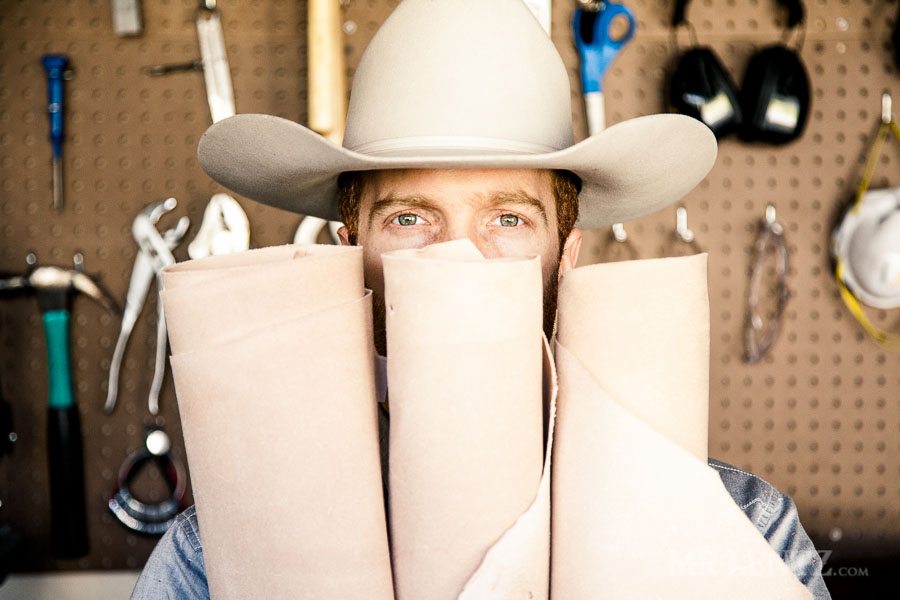
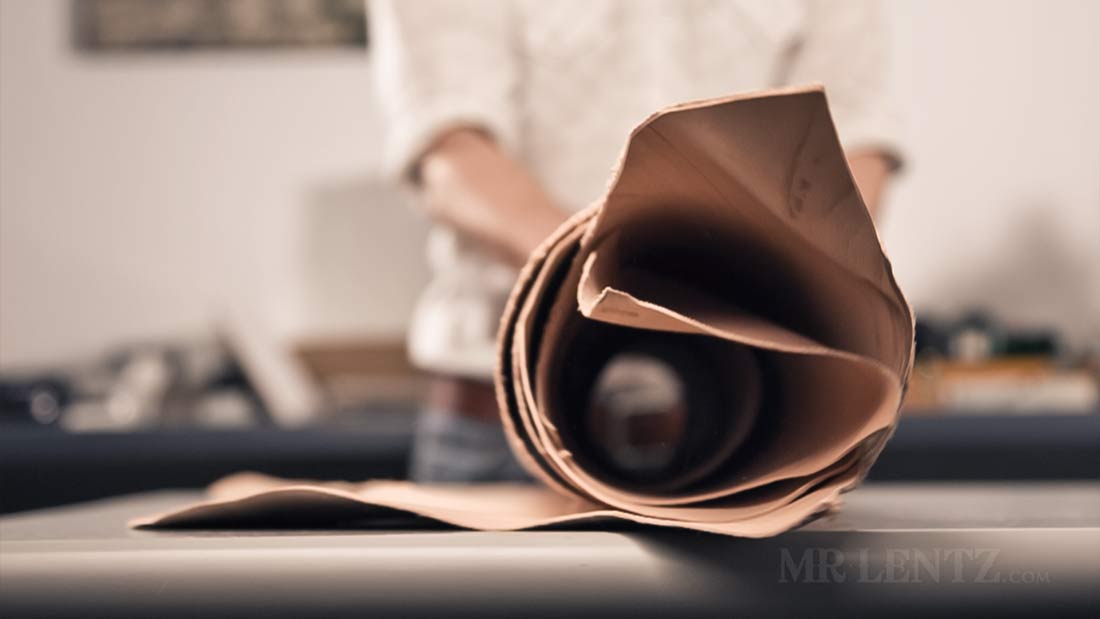

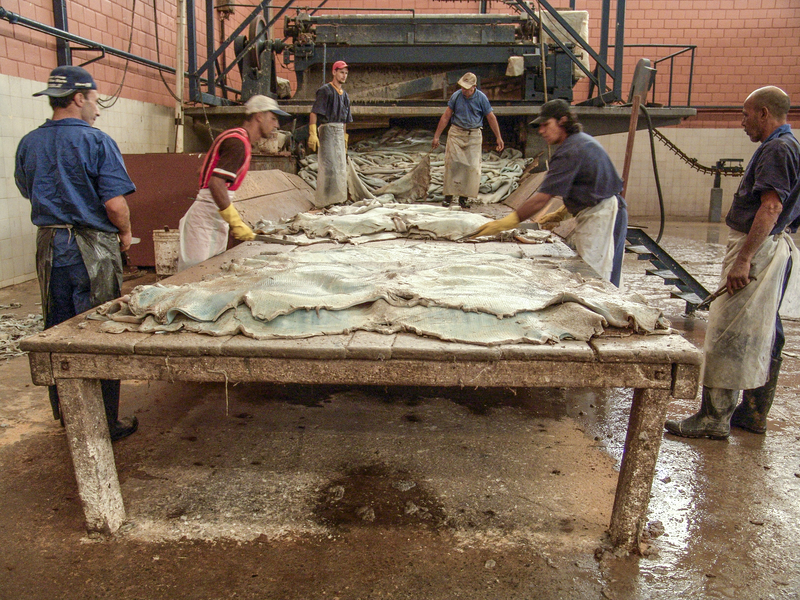
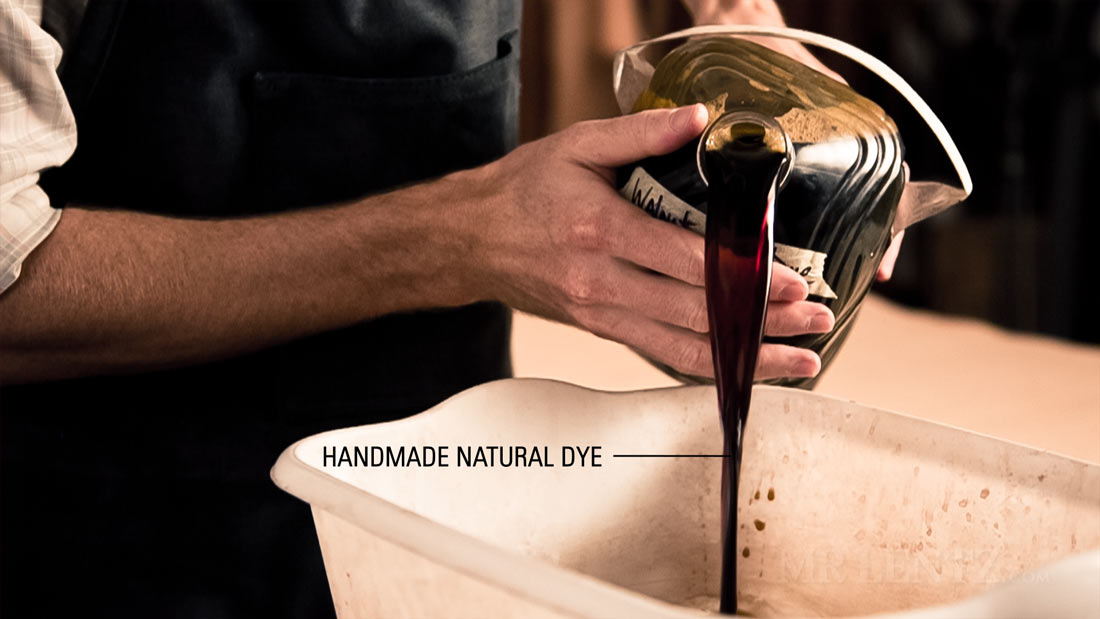
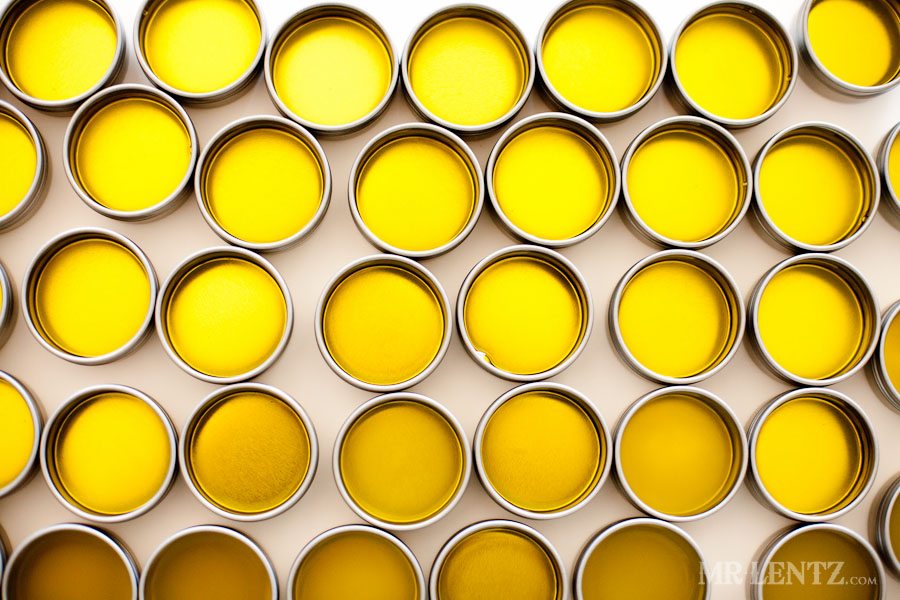





I just hope you can tell me where I can buy a small amount of naturally tanned and dyed leather for a small project, some panels in the interior of a small, old British sports car. I’m looking internet, but confused. Bob
Hi Bob – certainly, if you are a hobbyist in need of a small piece I’d try Tandy Leather. It’s a decent source fo the beginner, otherwise try ebay. Good luck!
Hi Mr. Lents,
I just purchased a used leather couch, loveseat, chair and ottoman in excellent condition that I know to be at least 7 years old, (maybe more), the leather is in perfect condition. The tag underneath says “made in Italy” soft line brand. My issue is that it doesn’t have that “smell” I would associate with real leather. It doesn’t really have any smell. My question is, can leather lose that smell over a number of years? Thank you so much for your time!
Hi Debra – Since the ‘leather smell’ is usually from how the leather was tanned as well as the chemicals applied to it, I would assume that after a certain amount of time its ‘off-gassing’ will have slowed and you will not smell it as much. I would not use the smell alone to judge whether or not it is real leather because even vinyl and fake leathers can be made to have that ‘smell’ by applying chemicals. Some fake leathers can be hard to distinguish by sight…unfortunately you realize it after a few years and spots have work through or torn. Also – the origin of the item will not necessarily mean it is real leather. Fake or cheap stuff is produced the entire world over.
I purchased a Dooney and Bourke florentine leather bag. It had a strong smell but not a fishy smell that I see most people complain of but I also don’t know if what I was smelling was a “chemical” smell either. It just didn’t have a typical leather smell. Can florentine leather vary in smells because I have another florentine bag from them and it actually smells like leather…nothing strong like this new one.
Hi Lyn, while I can’t comment on specific leather manufacturers – your best bet would be to call them up and ask what type of leather they use in their products, how they are tanned, and whether or not chemicals are used in the process. There are quite literally 100’s of leather types out there, all with different styles of tanning.
How can recreate the smell of leather in my car?
Your best bet is to get it re-upholstered in a Full-Grain Vegetable-Tanned leather…it’ll be pricey though!
Is there a non toxic formula to replenish the leather smell? If so, what oils or synthetic ingredients fo you suggest please?
Hi Abdul – in the article I mention that the leather smell people are used to, is actually due to the chemicals used in the tanning process as well as those used by various manufacturers. If you would like a natural finish to vegetable tanned leather – I recommend using beeswax, olive oil, and other natural oils.
Hi, I have a pair of western boots, leather. They sunk up the whole house the first few weeks out of the box. I can still smell them. Its that kindof leather is chemical smell. Very strong. Not natural. Though they are made of genuine leather…today I wore them out, came home and my sock reeks of the chemical leather smell. I’m worried this is going into my body. Is there anything I can apply to the leather to further defume these so I am not exposing my skin and lungs to these chemicals? BTW I’m surprised those who work at the retail stores full of western shoes don’t have cancer.
Hi Andrea – in short the smell is due to the tanning process used to preserve the hide, plus any dies they used, plus and conditioning chemicals they have used, plus any waterproofing. Yep – depending on where you got that item, things may not smell all that great. Unfortunately only time will help with that specific odorous boot – it’s time that the VOC’s (Volatile organic compounds) have to be released into the atmosphere. And yes, you would be breathing those in as well. Who knows what happens after that. If you can – try and choose leather items from reputable manufacturers who select U.S. ‘vegetable tanned’ hides and use natural conditioners and waxes. The tanning process is still not perfect, but it is the best thing you can get after traditional ‘brain tanning’ methods used by Native American tribes for thousands of years.
Hello Mr. Lentz
I have a cream colored sofa that I purchased 9 months ago and it still has a chemical smell to my t. What can I use to eliminate that? Thank you!
Hi Denise – with leather, the smell comes mainly comes from how the leather was tanned (along with any other chemicals added to it to prevent water absorption in the case of sofas). So unfortunately in your case there is no good way to get rid of a smell like that. The best preventative method would actually be to purchase a couch with a higher quality leather tanned in the U.S. (such as most vegetable tanned leathers). Unfortunately the price goes way up for those!